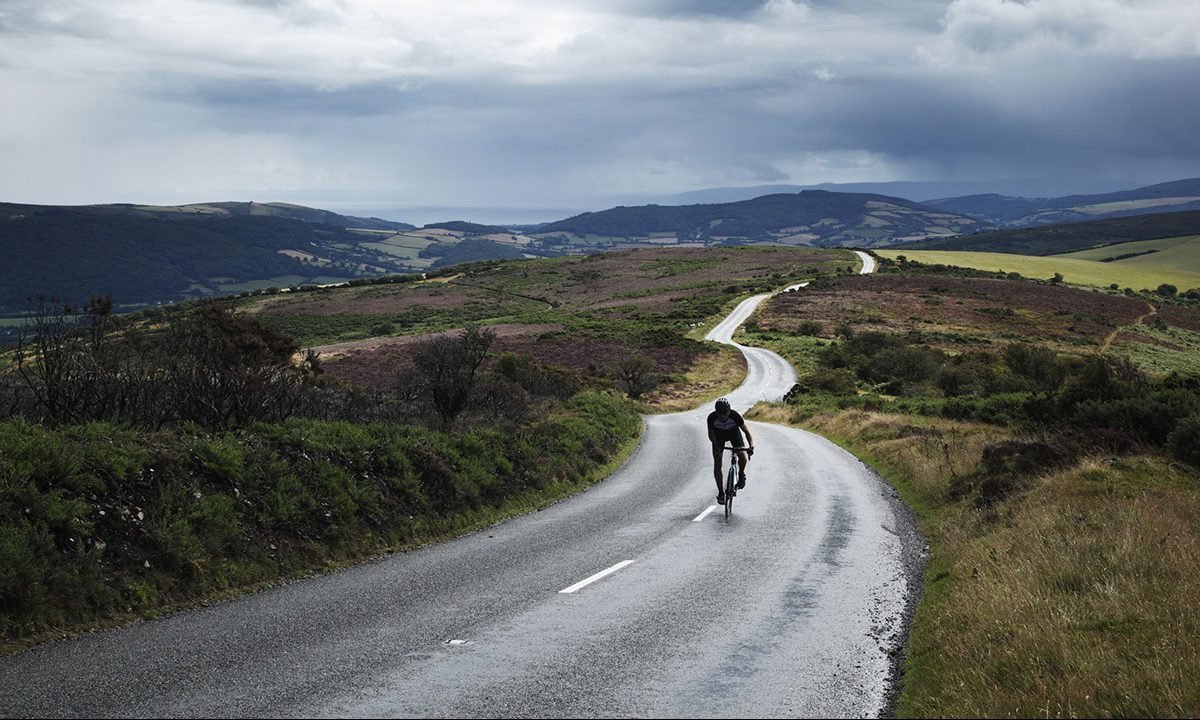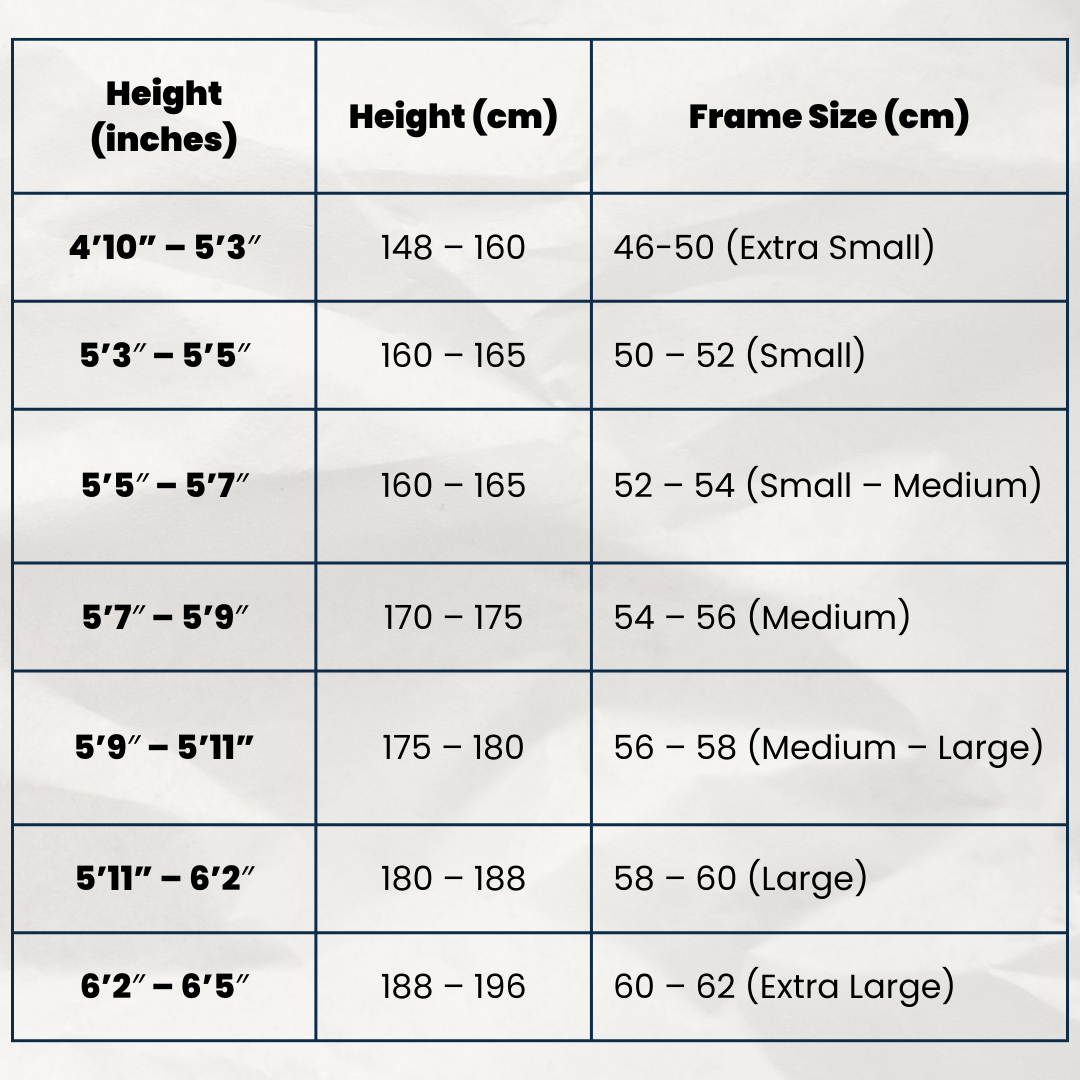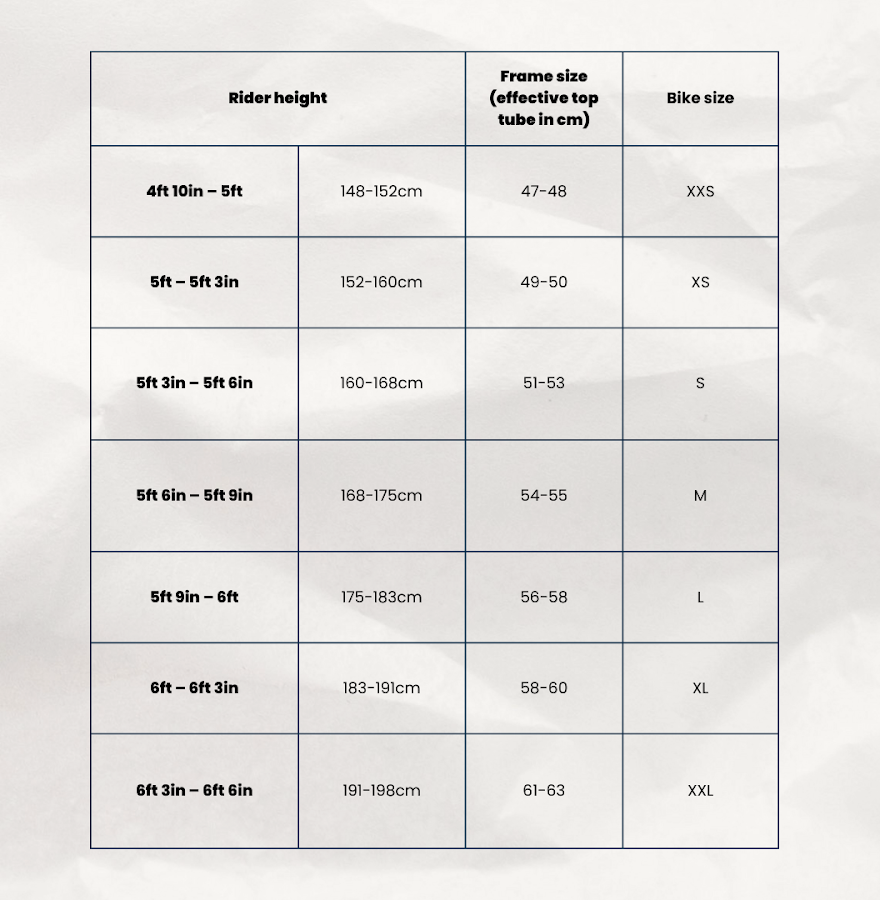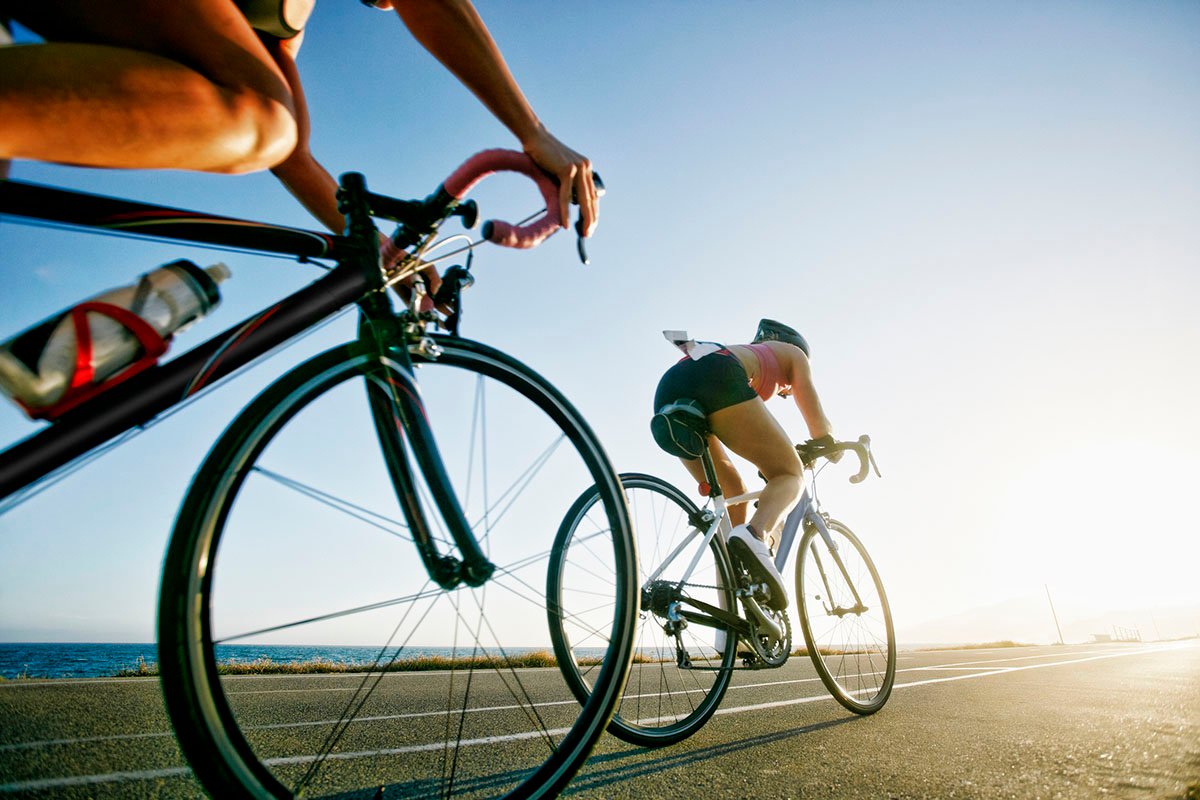What Size Road Bike Do I Need?

What Size Road Bike Do I Need?
Imagine yourself speeding down Colorado’s Glenwood Canyon, without a care in the world, pushing pedals at speed and living life to the fullest. It all starts with getting a road bike, and that should start by navigating the complexities of understanding bike geometry, how your height relates to fit, and whether you are sitting on the frame in the right proportions for your body. It’s common for first-timers to make mistakes, so don’t let that be you. If you are struggling to size your road bike or you are looking to get one for the first time, you’re going to need to know how to find the perfect size of bike for you. Bypass the struggle, and give this a read to find out the keys to riding in optimum comfort.
How to find your size for a road bike
Fitting your bike is extremely important. It can be tempting to take a friend’s hand-me-down or your neighbor’s old wheels, but fitting your bike, especially for long rides, greatly affects your experience. Having the wrong size bike can cause not only injuries but can turn a great outdoor two-wheel expedition into a long, slow torturing ride.
Pro Tip: Don’t buy the cheapest bike, but find a decent quality bike used, on sale, or second-hand to improve your quality of riding experience
Here is an outline of the steps to finding your correct road bike size:
- Measure your inseam
- Use your inseam to calculate the correct seat tube length, (the straight distance between the bottom bracket and the top of the seat tube)
- Consult a chart and the manufacturer’s suggestions for how to size the specific bike you want: road bikes, mountain bikes, and hybrid bikes will have different fits
- Find the correct standover height
- Test the frame if you are able to, and adjust the seat height to fit your leg-length
- Assess the ease and position of reach to the handlebars
- If possible, get your bike professionally fitted
- Make sure it’s comfortable
- Don’t buy the cheapest bike
Related: 8 popular full suspension mountain bikes on the market right now
Measuring your inseam
Finding your perfect size for a road or mountain bike starts with a little measuring. The most important measurement to consider is not your height, but your inseam. Every person’s body has different proportions regardless of height. Bike fitting concerns how long your legs are (inseam) and how long your torso is.
Your inseam is the length from the bottom of your foot to your crotch, specifically where you’ll be sitting on the bike seat. This determines what size of bike frame you need.
It doesn’t matter what height someone is, only their inseam. For example, a man who is 5’9” might ride the same size as a woman who is 5’7” depending on their inseam. In this example, the man may have a shorter inseam and also need a smaller frame, despite his height.
Consult the manufacturer’s chart for what bike size works best for your inseam and body height as a start. Use the following road bike size charts to find a general right size bicycle for your height and inseam.
Road Bike Size Charts


Standover height
Once you have used your inseam to find a frame that reflects your inseam and height, the next step is to test your standover height. Standover height refers to the distance between the ground and where your body hovers above the bike top tube when at rest. For example the height of your body at a stoplight while your feet are touching the road, or the height you would use to mount or dismount your bike.
Aim for a standover height with a few inches between your crotch and the top tube, so you can comfortably stand at rest and get on and off the bike. Measuring your inseam can be used to estimate your standover height if you are buying a bike online.
Don’t forget to also consider the geometry of the bike and the standover height intended for the specific bike frame.
Handlebar reach position
The next key indicator of your bike fit, is the position your torso rests in while you hold the handle bars. Poor fitting reach to the handlebars can result in back injuries, shoulder pain and discomfort when riding your bike for long distances.
Assess your position with the following positive cues:
- Elbows slightly bent
- Able to reach brakes and shifters easily
- Bending in the waist and not the back
Your comfort is your indicator for the perfect fit. Many professional racers may want to be more extended and road bike commuters may want a more relaxed reach.
Bear in mind all bikes fit differently and not all bikes are meant to have your body in the same position in relation to the bike. Certain mountain bikes may be more upright and certain road bikes may be more forward bending, consult the manufacturer’s guide to find out the best position for your specific bike choice.
You should be able to rest on the bike, rather than engage all your muscles to be in that position. Think about comfort first and whether you can continue to ride in that position for hours at a time.
Related: This is What It Looks Like To Ride A Bike Downhill at 50MPH
How to know if your road bike fits

The most accurate way to know if your bike fits is to internally assess your position. If you have the means, getting your bike professionally fit is a great option to ensure that no harm will be done by riding an ill-fit bike without knowing.
Go to a bike shop to get it fitted after sizing your bike with your inseam and height. A bike shop can help smooth out issues and adjustments that will help protect the mechanics of your body as you ride.
You can tell that your bike doesn’t fit if:
- it feels too small
- your body can’t sustain proper mechanics on the bike
- your knees bend too much
- your knees are too straight
- it feels like your seat can’t go high/low enough
- you feel scrunched in the upper body
- your spine is too bent (a bit is okay)
- you feel too stretched leaning towards the handlebars
If you have any pain while riding, or hurt afterward, then your bike might not be the right size.
Pro Tip: Wear whatever bike shorts or chamois you be using when you ride to your bike fitting as it adds a bit of height. If you don’t wear chamois, please go get some now.
If you’re going to start riding, why start on a bike that doesn’t fit? Take your measurements, pick out your bike, and get your bike fit and you’re ready to go. Remember, it isn’t a great idea to start off with the cheapest bike; if you can, opt for something mid-level to get a better bike riding experience. The better the bike is made, the better it will feel.






